to communicate & manage on-going maintenance.
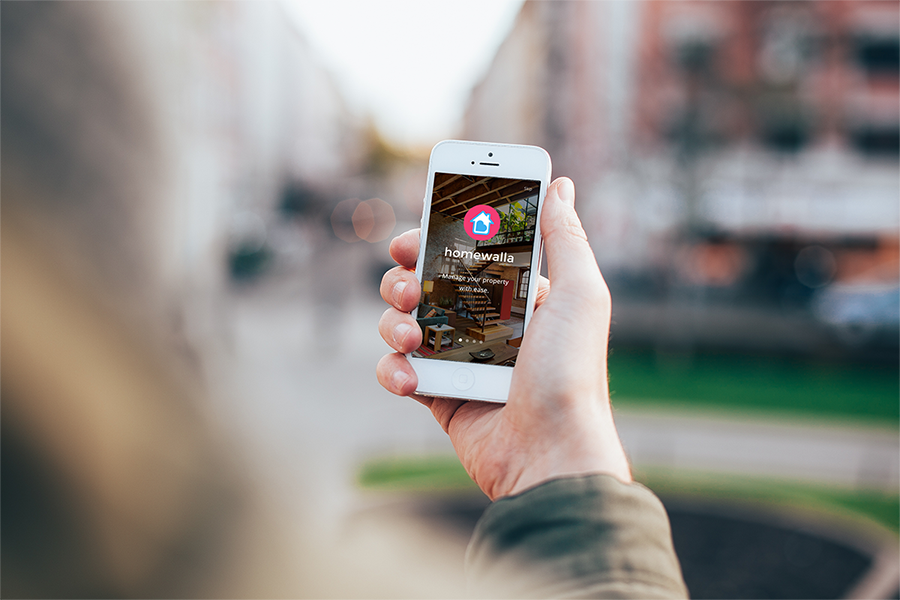

Synopsis
We applied user-centred concepts to design a mobile app that help landlords and tenants manage communications, rental expectations, and maintenance seamlessly.
Techniques
Surveys, User Interviews, Stakeholder Interviews, Competitive Analysis, Personas, User Scenarios, Feature Prioritisation, Sketching, Paper Prototyping, Usability Testing.
My Role
I focused primarily on the landlord's experience and was responsible for conducting user research, creating user journey maps, and sketching user flows. The final result was an interactive prototype built in POP3 that allowed us to demonstrate key user flows.
Team
Maren Hotvedt, Derrick Heng
The Challenge
Develop an minimum viable product (MVP) for a mobile app to address problems existing in the rental management space in a two-week sprint.
Tools Used
Typeform, POP3, Photoshop, Keynotes, Paper & Pen
Device
Mobile Application
Project Duration
2.5 weeks
Our client, Homefyndr, was developing a mobile application that provide a more personalised experience for people to find homes based on their unique needs, personal interests, social habits and travel preferences.
During their development phase, they realised there was a gap in the management phase of the property rental lifecycle.
Therefore, we were tasked to develop an minimum viable product (MVP) by applying user-centred concepts to design an app codenamed, "Homewalla" that addressed this gap and complement their existing product in a two-week sprint.
Empathise
As this concept was unexplored and not much prior research had been done. We focus on research and validation which are key to our design concepts.
Our first step was to confirm the three hypothesis that were outlined during client briefings. To do this, we conducted a competitive analysis, sent out 2 surveys and conducted three interviews each of landlords and tenants.
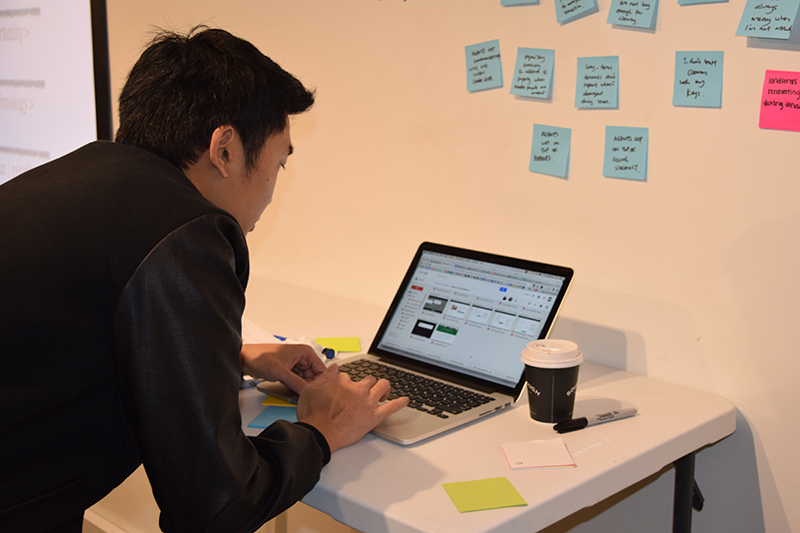
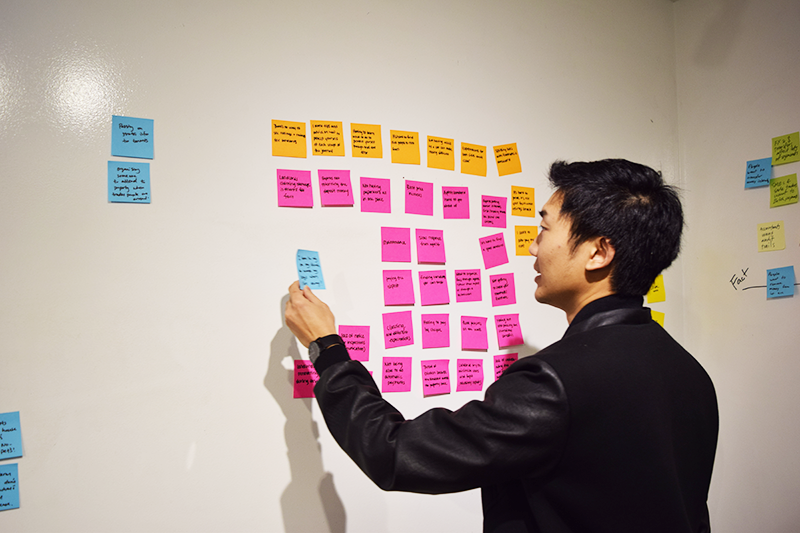

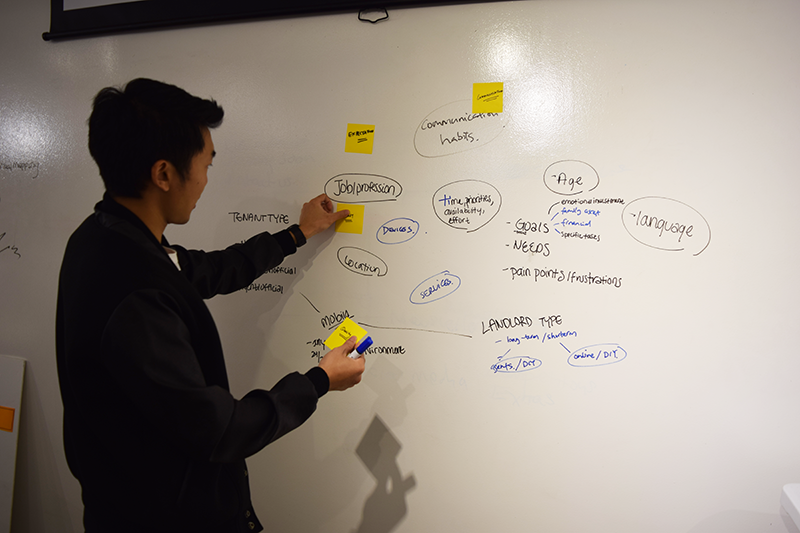
Using the data we collected from surveys and interviews, we looked at frustrations and problems both landlords and tenants were facing throughout their renting journey.
From our research, the primary focus was on landlords who self-managed their rental property for long-term as it ties with the business model of homfyndr. Short-term landlord that uses online rental services like Stayz or Airbnb are out of scope as they don’t sign leases.
Additionally, potential users of homewalla could be agents as they may like to manage their existing properties or communicate with their tenants better.

We also wanted to know what platforms and products already served the rental management and services spaces. We looked at similar platforms along the spectrum of rental management and home services. Four of the best examples we found were Cozy, RentingSmart, Pillow, and TaskRabbit.
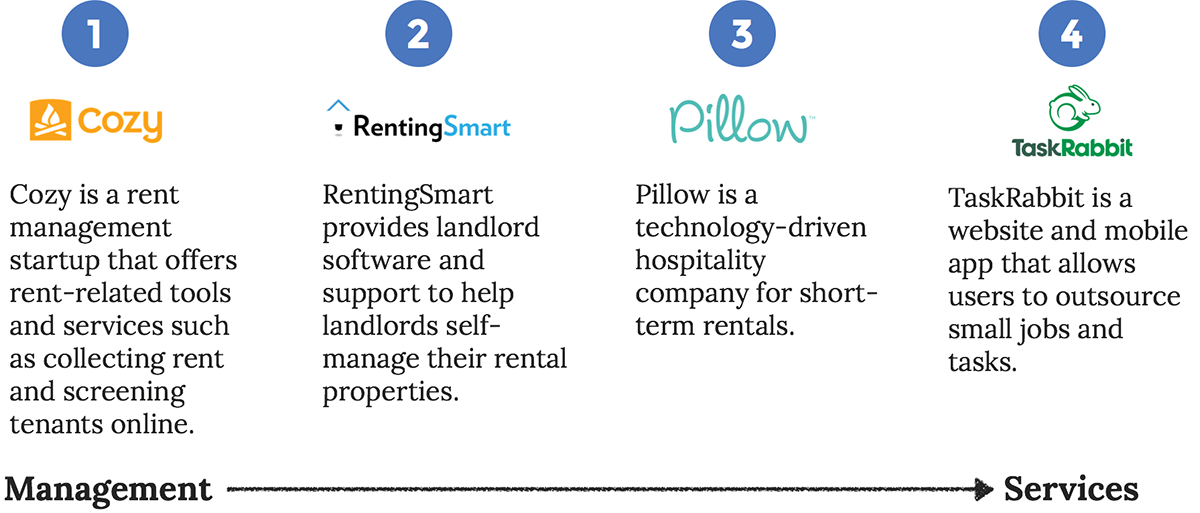
Define
With the scope in mind, we used the user research and competitive analysis to prioritise potential features and determine what was needed for a minimum viable product.
We knew there were 3 main drivers of frustration: problems with communication, expectations, and payments. Using the feature prioritisation, we looked at those 3 drivers and selected the features that would best address those pain points.

In conjunction to feature prioritisation, we formed high-level overview of motivations, goals, frustration, and touch points users might experience through creating an affinity diagram.
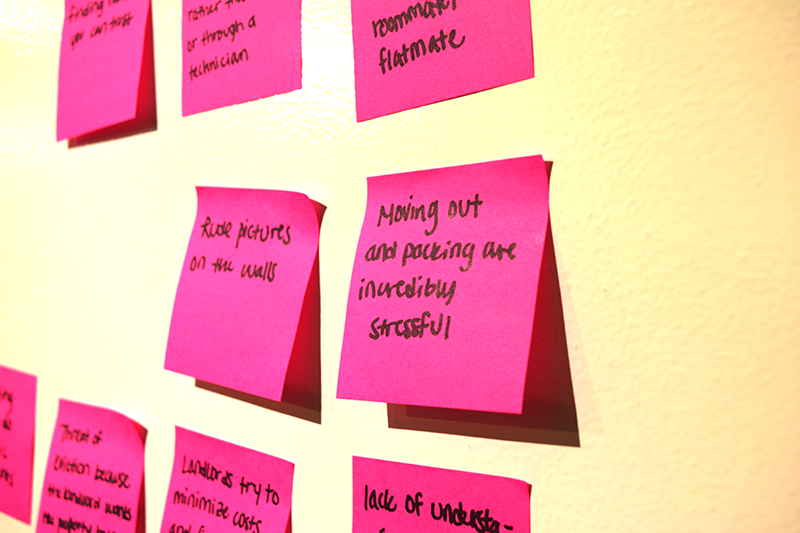
"From the affinity diagram we were able to conduct a persona development workshop which supported our development of primary personas and scenarios in the next step."
Now that we had the features narrowed, affinity diagram and conducted a persona workshop, we developed four primary personas to understand their thoughts and behaviour across the renting experience.
With the personas developed, we used an experience map showing multiple touch points across the user journey and how frustrations were addressed with the mobile app.
Ideate
After developing the user journeys, we started sketching a solution that supported all user scenarios and overall objectives.
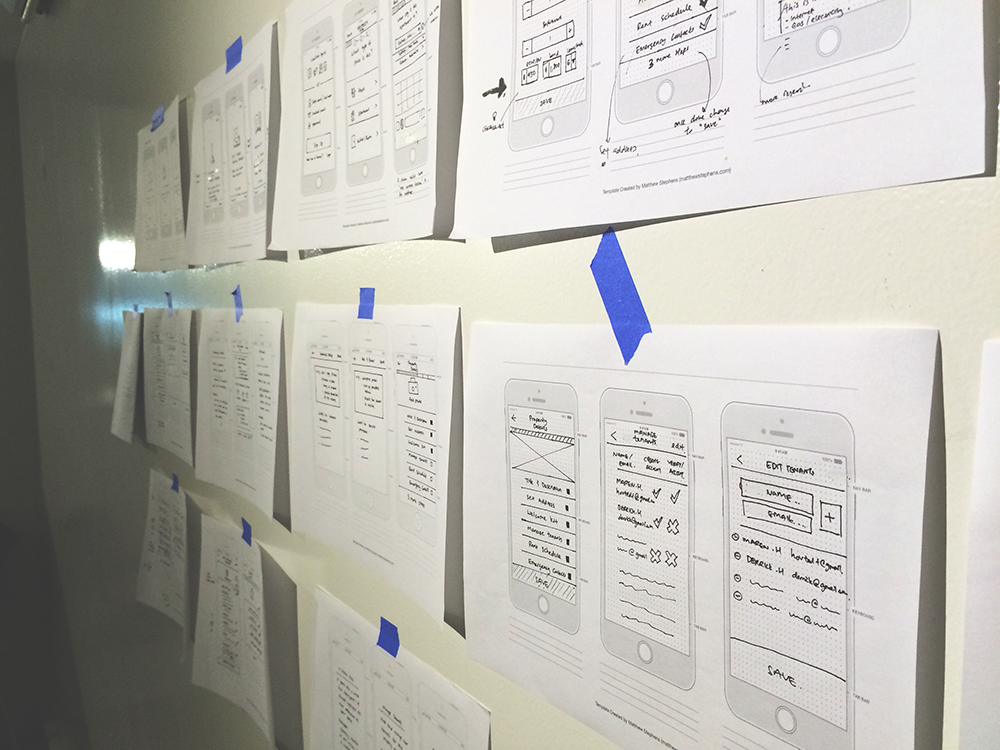

We incorporated some concepts inspired from successful property apps e.g. airbnb, cosy, pillow, etc that had worked well into our design to provide a delightful experience for users.

We found that onboarding was quite a lengthy process e.g. property details, welcome kit, rental information. Breaking these journey into smaller steps and providing helpful tips and progress indicators provided better experience for the user.
Prototype & Testing
Our final product was an interactive prototype using POP3 (Prototyping on Paper) app.
We conducted three rounds of usability testing, the results were overall positive with a few improvements that helped us finalise our sketches for the Homewalla app.
The clients, Homefyndr, are working on further development of the idea, and hopefully will launch later this year.
Always good to get your clients onboard early.
Brief do change from time to time.
Scope out requirements early.
Communicate with stakeholders regularly.
This project was conducted as a part of the User Experience Design Immersive course at General Assembly.